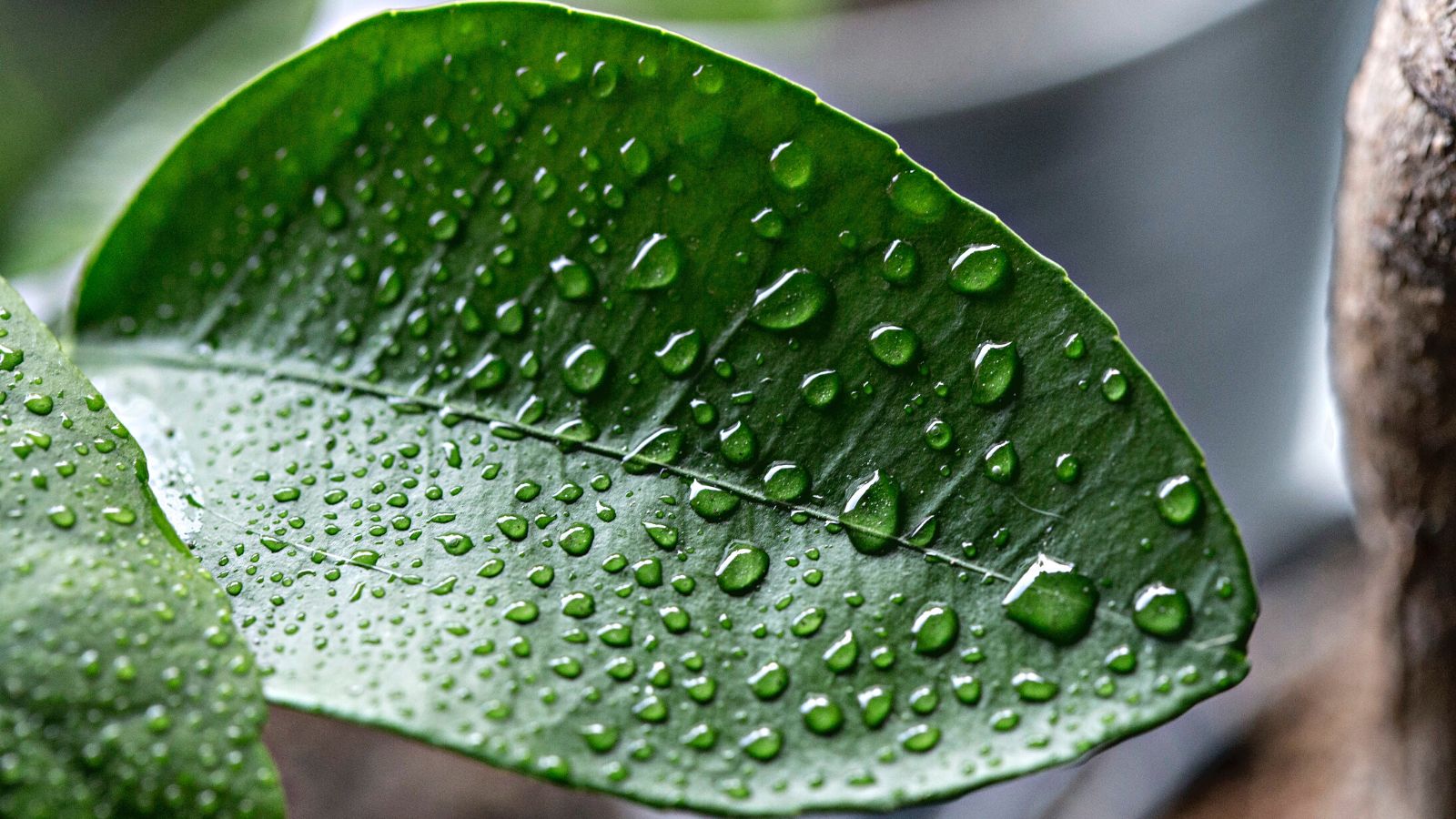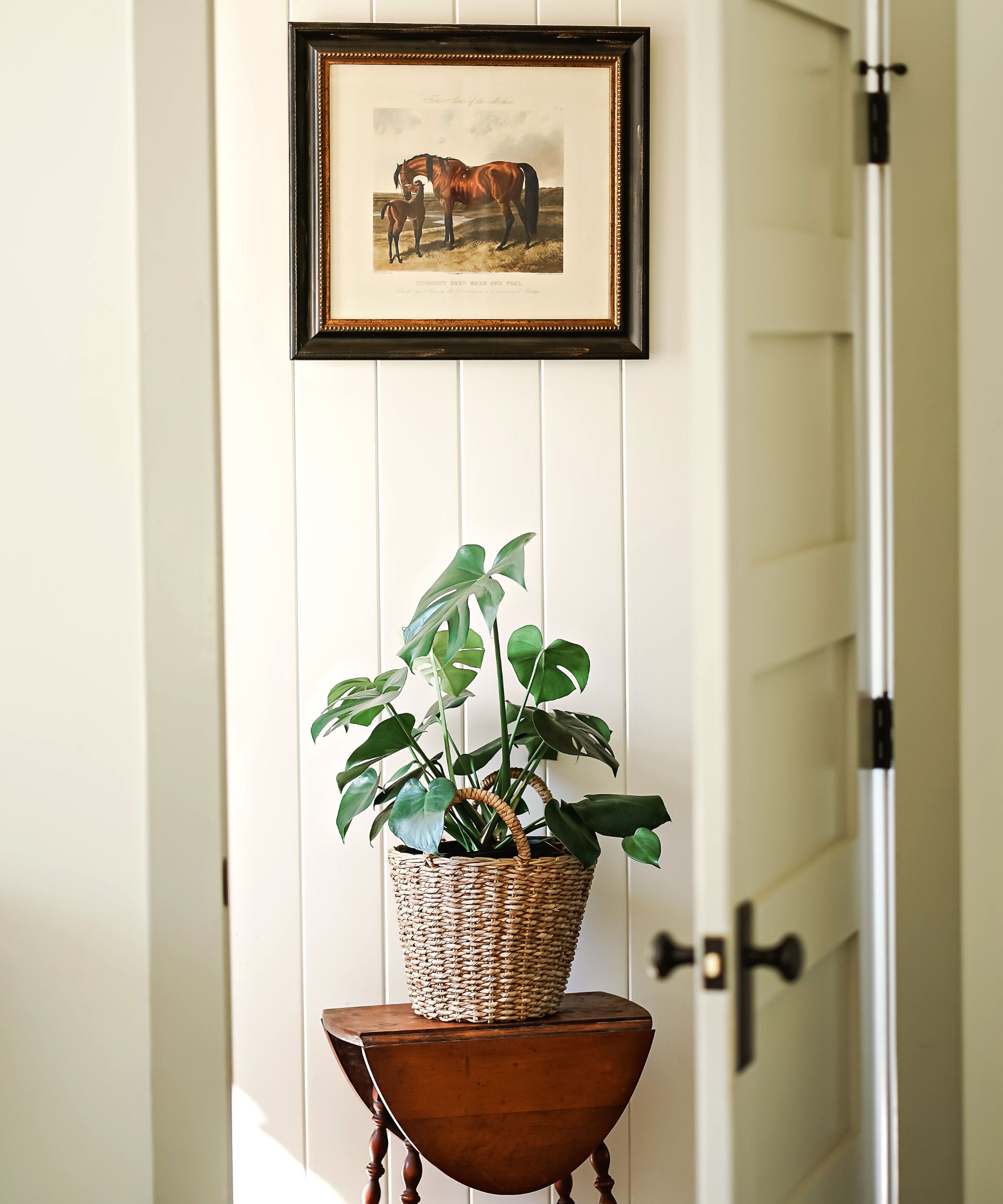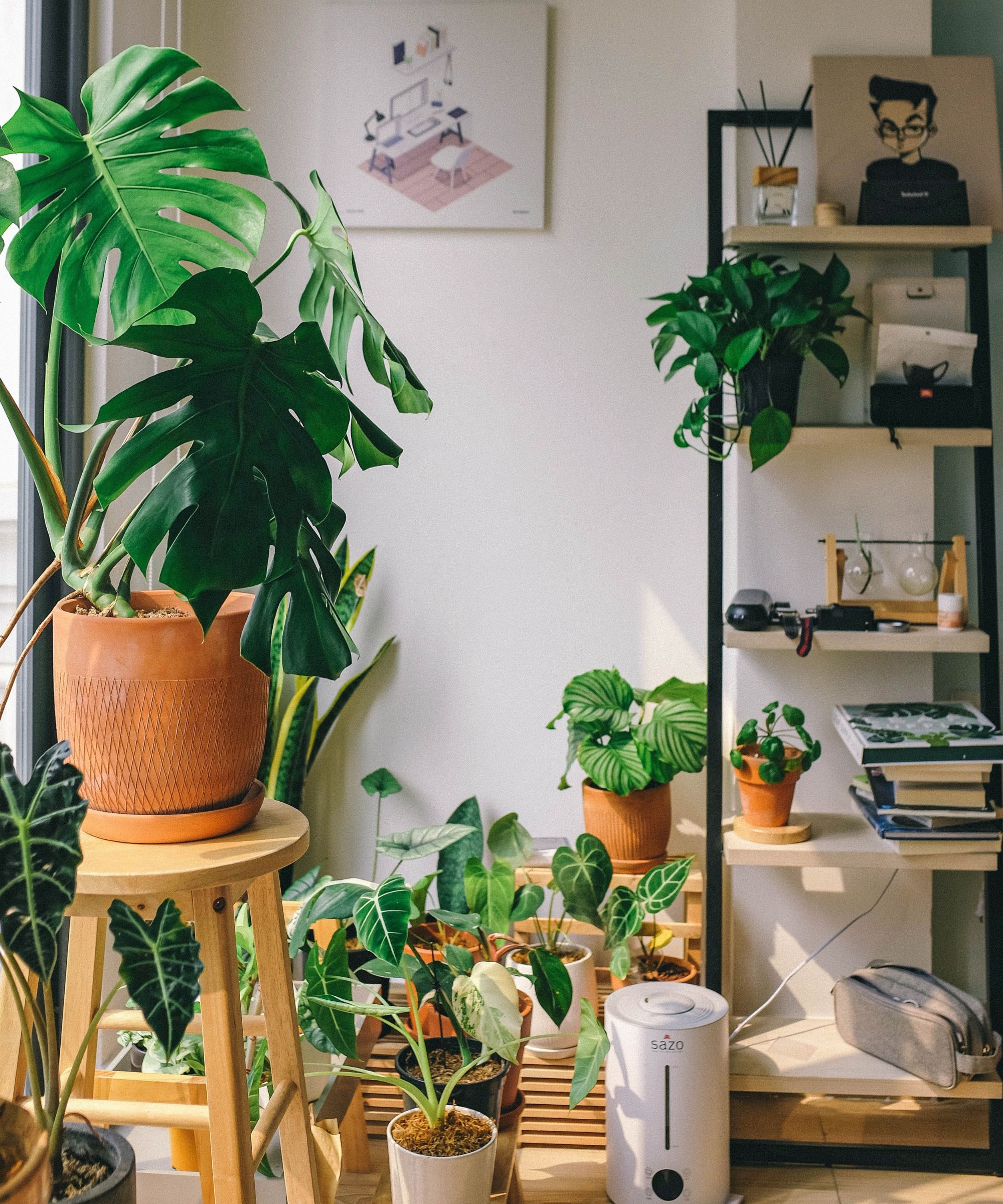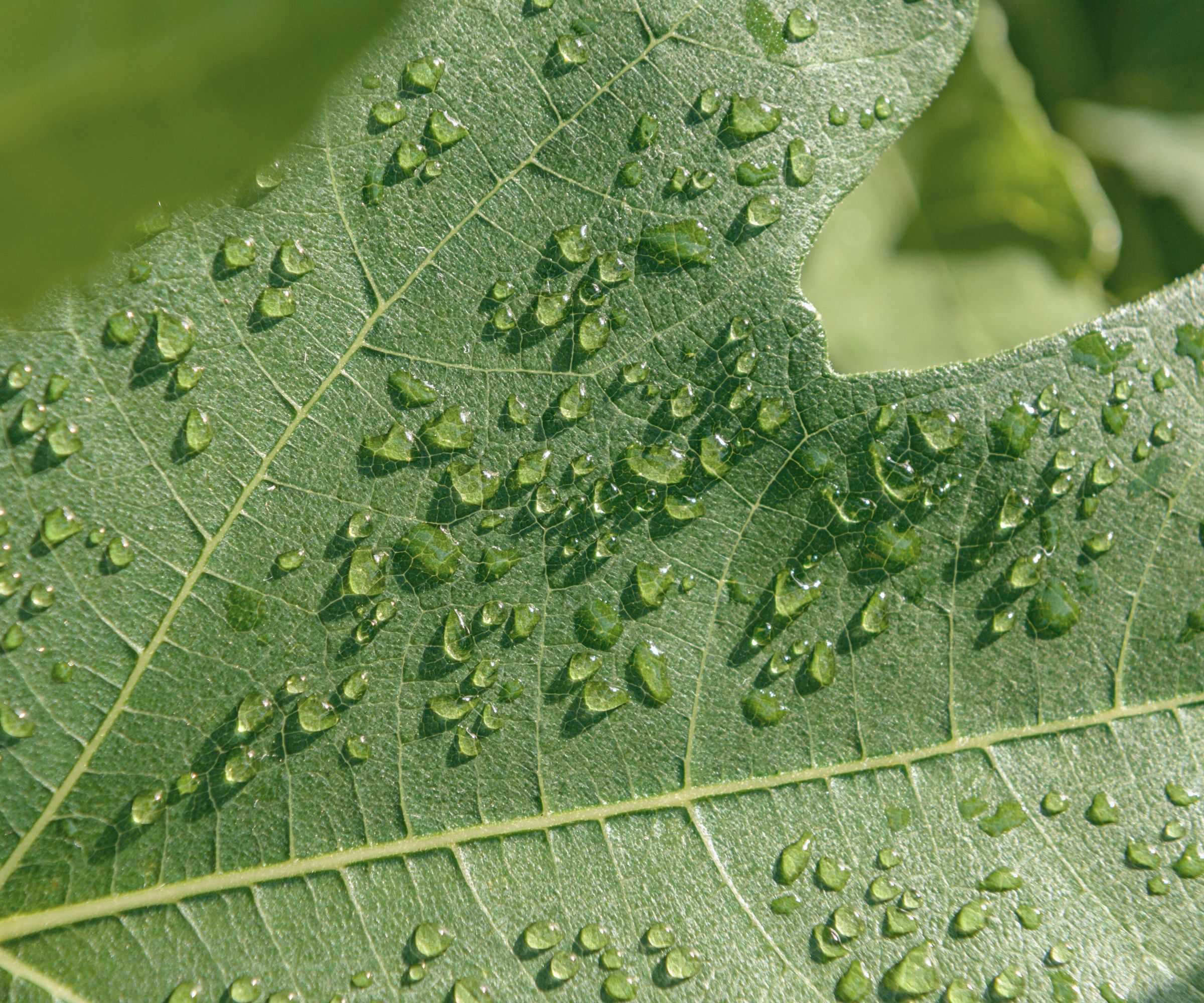Why are there drops of water on my plants? What they are and how to fix it from an expert
Why are there drops of water on my plants? Find the answer – and how to banish them


If you don’t mist your plants but there appear to be beads of water coating a plant's leaves and stem, it can look as if it’s crying. While that’s – of course – not the case water droplets on leaves can be a sign that your plant isn’t thriving. So, why are there drops of water on your plants?
There are a few reasons why there might be drops of water on your best indoor plants, from simple condensation to more mysterious guttation. While they are rarely harmful to the plants themselves, these dewy drops could damage your furniture and floors.
Here, an expert explains what may be causing these increased water droplets and how you can prevent them.
Why are there drops of water on my plant leaves?
'If you find mysterious drops of water on your plant leaves, it is usually caused by one of three things,' says Rachel Crow, garden editor of Homes & Gardens. 'Luckily, it is an easy problem to resolve and often just requires you to water your plant less often.'
1. Transpiration

'The majority of the time, water droplets on plant leaves are caused by transpiration, Rachel explains. 'This is the natural and essential water exchange process in the plant. You will know if the droplets are caused by transpiration if the moisture forms around the tips of your houseplant leaves – think of it as if your plant is sweating!' she adds.
If your houseplant has had too much water, the main way of removing the excess is to 'sweat' the water little by little from the leaves, allowing the droplets to either fall from the plant or evaporate into the air. If there are only a few drops of water that appear infrequently, this is nothing to worry about.
'If this is becoming a common occurrence, you will likely need to reduce how often you are watering your house plant,' Rachel says. Knowing how often you should water indoor plants is one of the main pillars of plant care, even for the best low-maintenance indoor plants.
2. Dew

Dew is a form of condensation that forms on plant leaves both inside and outside. 'In a situation where the temperature of the plant differs from the air around it, if the air is overly humid, for example, dew will form,' Rachel explains.
'This is more likely to happen in the warmer months if you have your window open as cooler air around the plant can't hold the same amount of liquid as the warmer air – the temperature drops, the condensation rate exceeds the evaporation rate, and water droplets begin to form.'
There is very little you can do to prevent dew from forming on your plants and most of the time dew is simply reabsorbed by the plant through its leaves in the morning. If frequent condensation is a problem in your home, however, consider investing in one of the best dehumidifiers to help reduce the problem throughout your space.
3. Guttation

'Guttation is a sign that your plant has been overwatered or that your plant is under stress,' Rachel warns. 'Because of this, it is important to decipher if it is the cause of your water droplets to start implementing a strategy to return your plant to its optimum condition as soon as possible.'
Guttation is the term used to refer to a plant attempting to balance nutrients or minerals, or releasing excess water. Unlike transpiration, however, guttation results in multiple water droplets appearing across the plant in swathes.
'Guttation releases droplets of xylem sap from the ends or edges of the plant's leaves; it is often mistaken for water, but it is filled with the plant's nutrient,' says Rachel. 'It often occurs overnight as the pores used in transpiration close up.'
While this may sound damaging to your precious collection, especially if you enjoy decorating with plants, the losses are not usually serious enough to cause any lasting damage. But, in rare cases, these leaks can invite bacterial growth leading to an infection.
Guttation is usually caused by overwatering your plant as saturated roots pressure the rest of the plant,' Rachel explains. 'The pressure forces the water up the plant and releases the sap. Simply holding off on watering for a little while should fix the problem and watering properly will prevent the problem from returning in the future.'
Why is my plant sweating?
When your plant looks like it is sweating, it usually is! Through a natural and essential process called transpiration, a plant will push small amounts of the excess moisture out from the tips of its leaves to help balance its water levels throughout the day. It also helps to cool its leaves and the air surrounding them, much like human sweat.
If your plant has an abundance of water droplets around the edges and tips of your leaves then it may be guttation, a sign of more serious overwatering.
Should I wipe off guttation?
It is generally a good idea to gently wipe away guttation with a slightly moist cloth to help the plant rid itself of excess minerals and nutrients to prevent leaves from browning or rotting. If left on the plant for too long, there is a small chance of rare bacterial infections taking hold of your plant and killing it off.
Sign up to the Homes & Gardens newsletter
Design expertise in your inbox – from inspiring decorating ideas and beautiful celebrity homes to practical gardening advice and shopping round-ups.

Chiana has been at Homes & Gardens for two years and is our resident 'queen' of non-toxic living. She spends most of her time producing content for the Solved section of the website, helping readers get the most out of their homes through clever decluttering, cleaning, and tidying tips. She was named one of Fixr's top home improvement journalists in 2024.
-
 The rumours are true, the NYC trend for fringes and trimmings is actually happening – they are the secret weapon for making a room look expensive
The rumours are true, the NYC trend for fringes and trimmings is actually happening – they are the secret weapon for making a room look expensiveA trim or a ruffle is the finishing touch that can take a scheme from ordinary to the extraordinary in an instant
By Jennifer Ebert Published
-
 How to grow impatiens – garden experts reveal the secrets to growing this shade-tolerant, sparkling summer plant
How to grow impatiens – garden experts reveal the secrets to growing this shade-tolerant, sparkling summer plantBoth 'Busy Lizzie' and 'New Guinea' impatiens can thrive in shady yards
By Ellen Wells Published